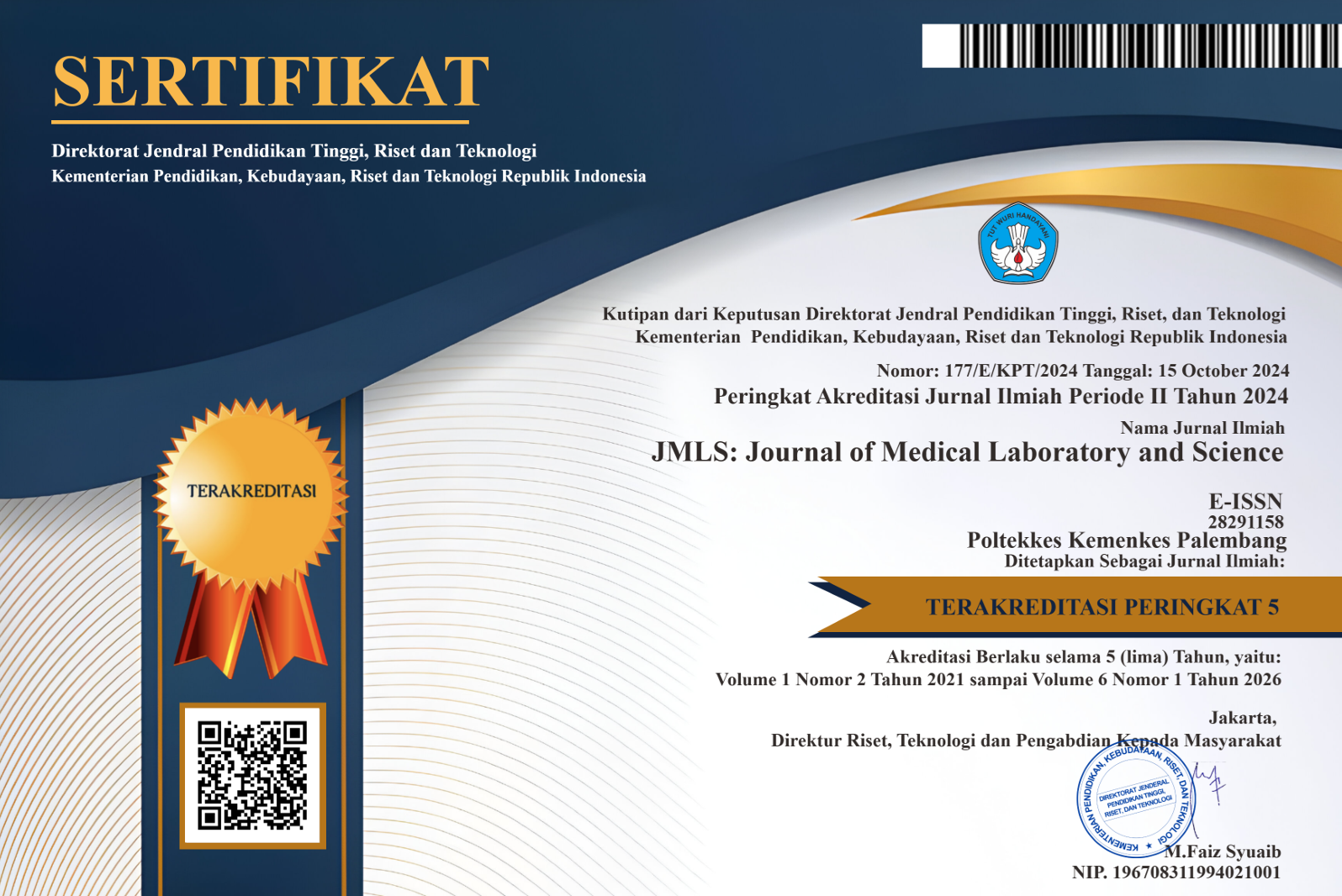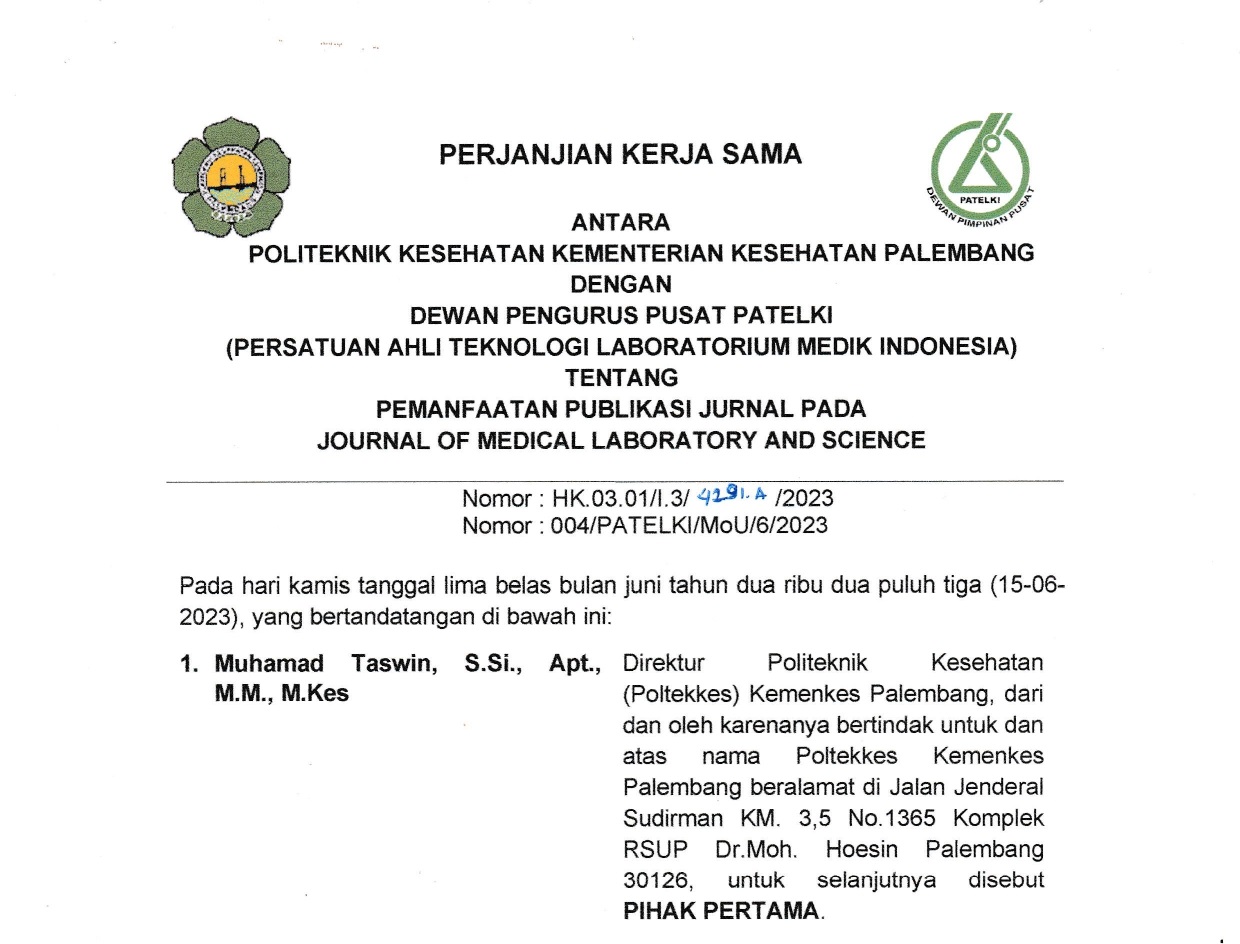PERBEDAAN KORELASI GLUKOSA DARAH PUASA PENDERITA DM DENGAN HbA1c METODE ENZIMATIK DAN HPLC DI RUMAH SAKIT ADVENT BANDUNG
DIFFERENCES IN THE CORRELATION OF FASTING BLOOD GLUCOSE IN DM PATIENTS WITH HbA1c ENZYMATIC AND HPLC METHODS AT BANDUNG ADVENT HOSPITAL
Abstract
Background: Diabetes Mellitus (DM) is one of the diseases that many people in the world suffer from today, its development is very worrying because it is one of the diseases that can cause death. One of the tests requested by the doctor is the HbA1c parameter, so far at Advent Bandung Hospital using the enzymatic method. The aim of this study was to look at the differences in the correlation between fasting blood glucose examination results and HbA1c levels using enzymatic and HPLC methods. Methods: The research method currently used is descriptive and was carried out at the Clinical Pathology Laboratory Installation at Bandung Adventist Hospital in November with a total of 30 patients suffering from diabetes. Results: The results were analyzed using the SPSS version 25 application. Tested with a normality test followed by a correlation test, the results showed a strong relationship between fasting blood glucose levels and HbA1c levels by the enzymatic and HPLC methods, from both methods the results of the HbA1c examination were between the enzymatic and HPLC methods. there is no significant difference. This means that both methods can be used to check HbA1c at the Bandung Adventist Hospital. HbA1c, this is because the two methods do not have significant differences and have high accuracy.
Keywords : Diabetes, Fasting Blood Glukoce , HbA1c Method Enzymatic and HPLC
Copyright (c) 2024 Journal of Medical Laboratory and Science

This work is licensed under a Creative Commons Attribution-ShareAlike 4.0 International License.
Authors who publish with this journal agree to the following terms:
- Authors retain copyright and grant the journal right of first publication with the work simultaneously licensed under a Creative Commons Attribution License that allows others to share the work with an acknowledgement of the work's authorship and initial publication in this journal.
- Authors are able to enter into separate, additional contractual arrangements for the non-exclusive distribution of the journal's published version of the work (e.g., post it to an institutional repository or publish it in a book), with an acknowledgement of its initial publication in this journal.
- Authors are permitted and encouraged to post their work online (e.g., in institutional repositories or on their website) prior to and during the submission process, as it can lead to productive exchanges, as well as earlier and greater citation of published work














